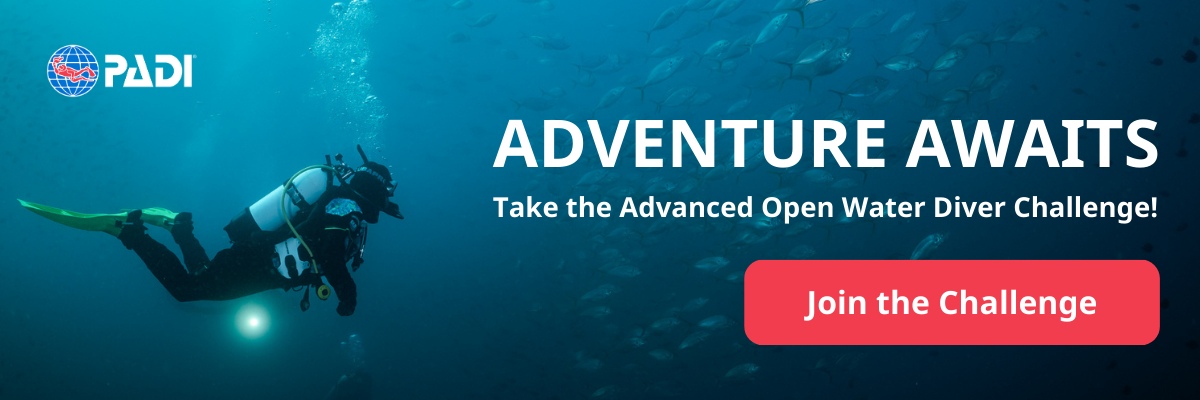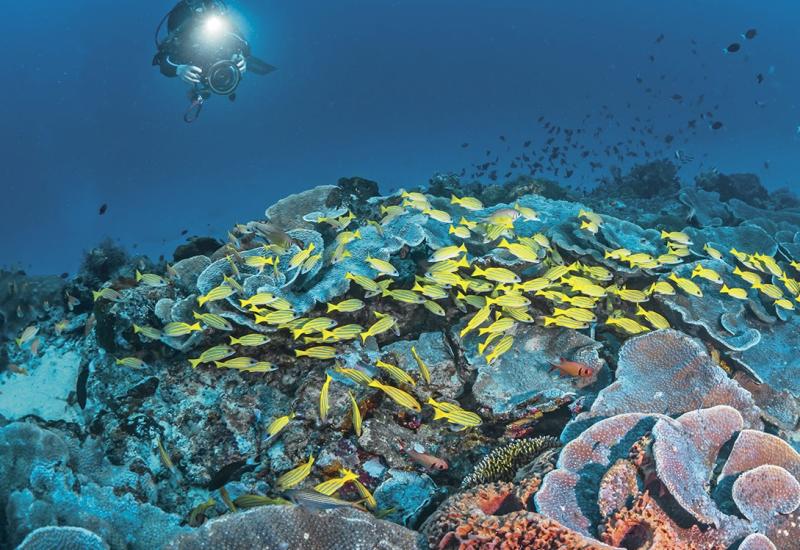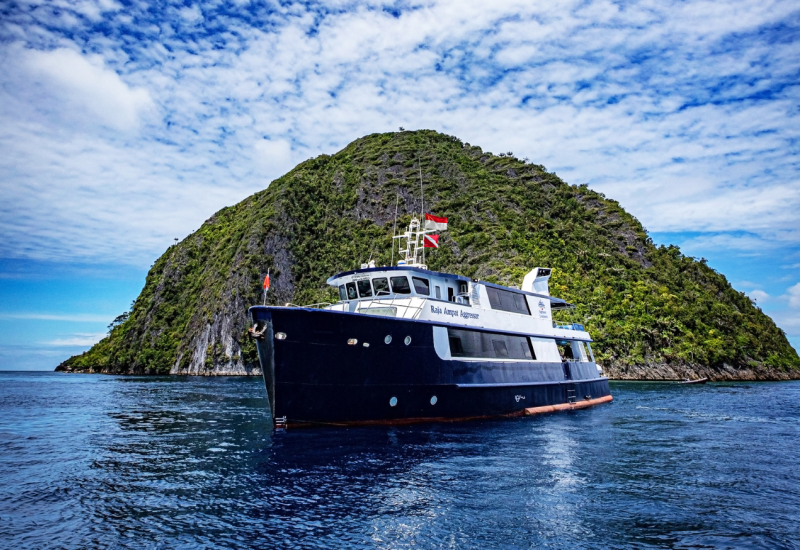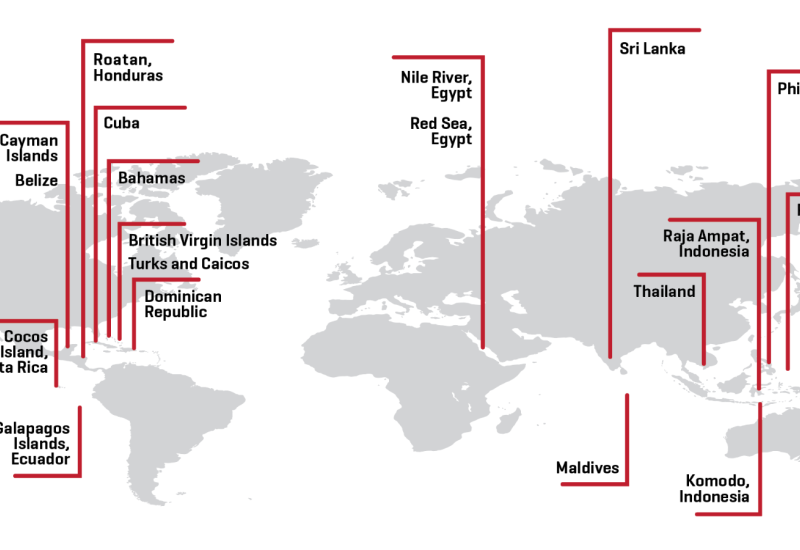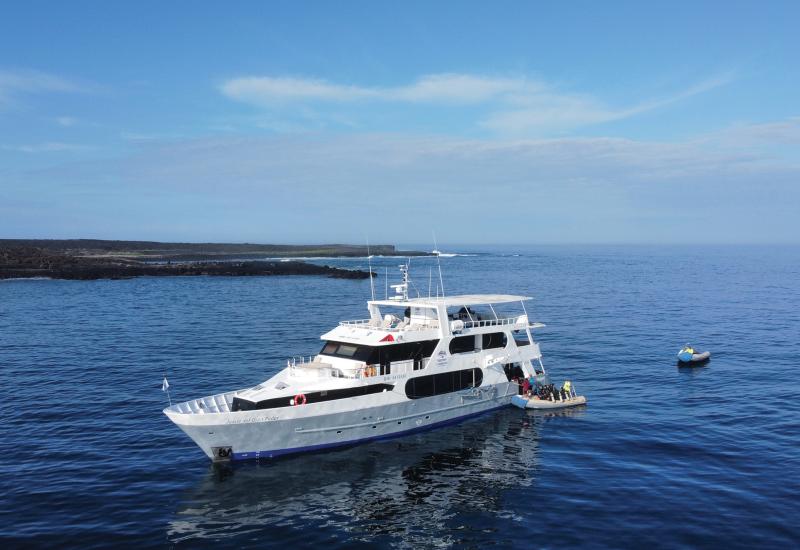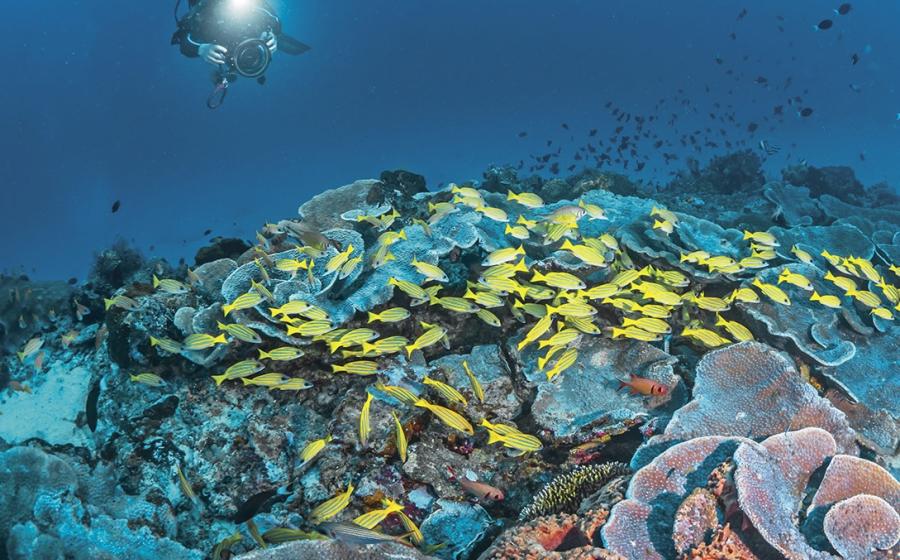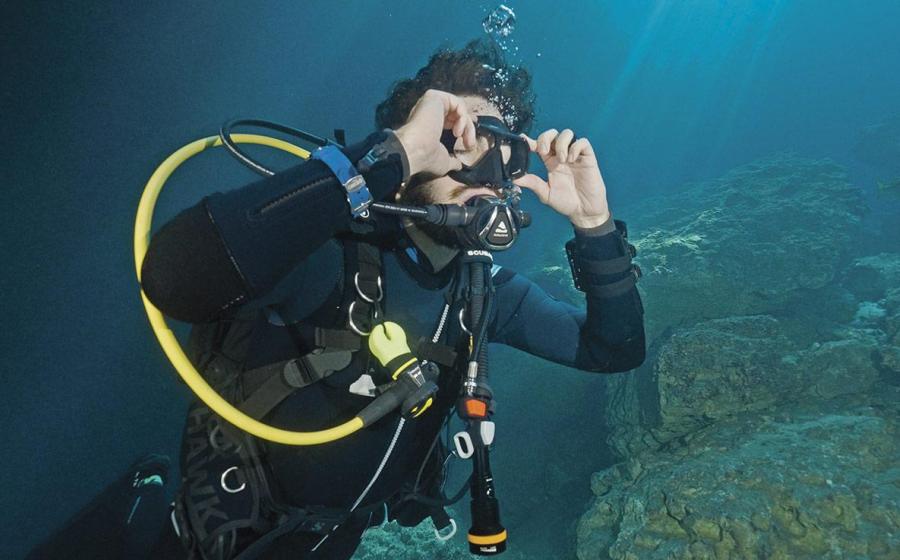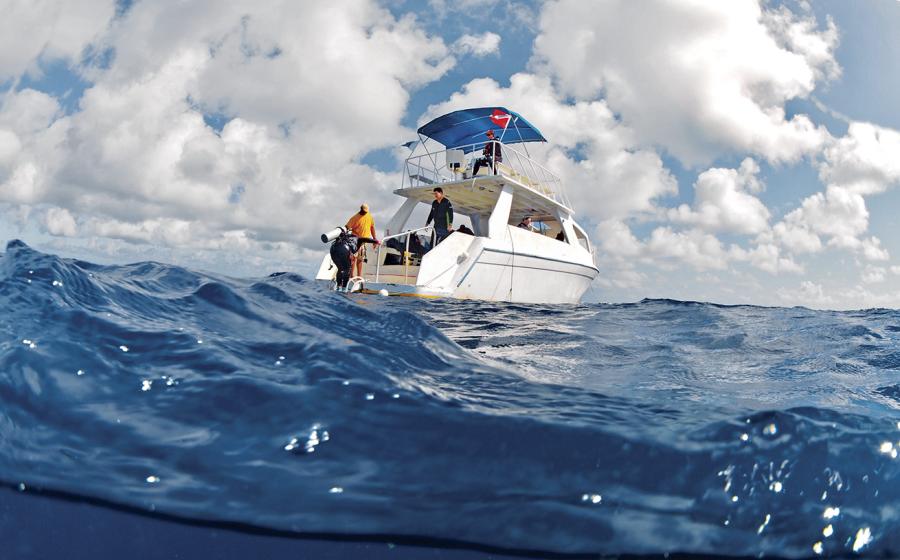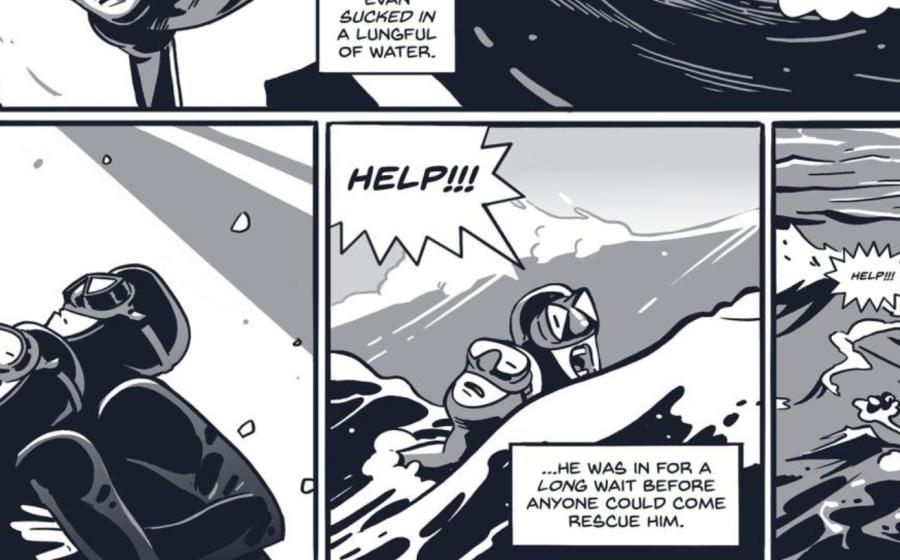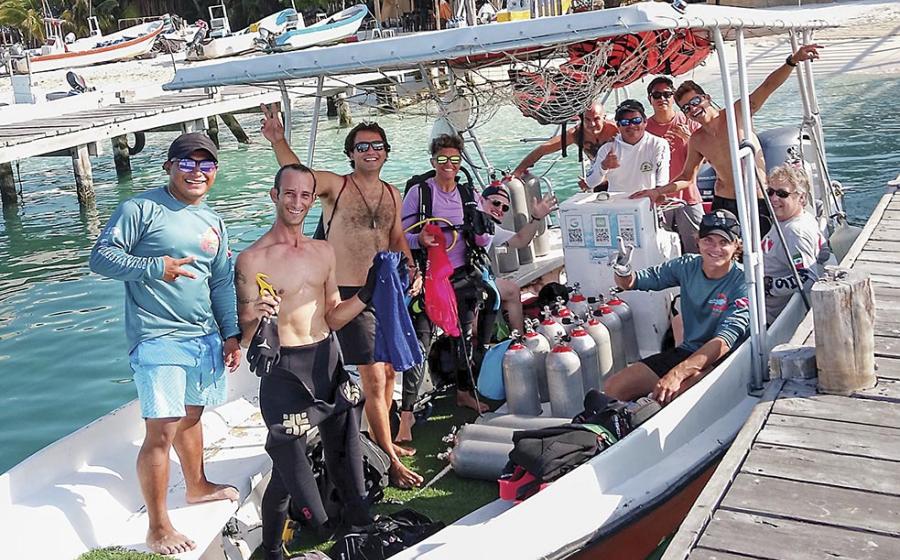The Best Dive Destinations for Advanced Diving
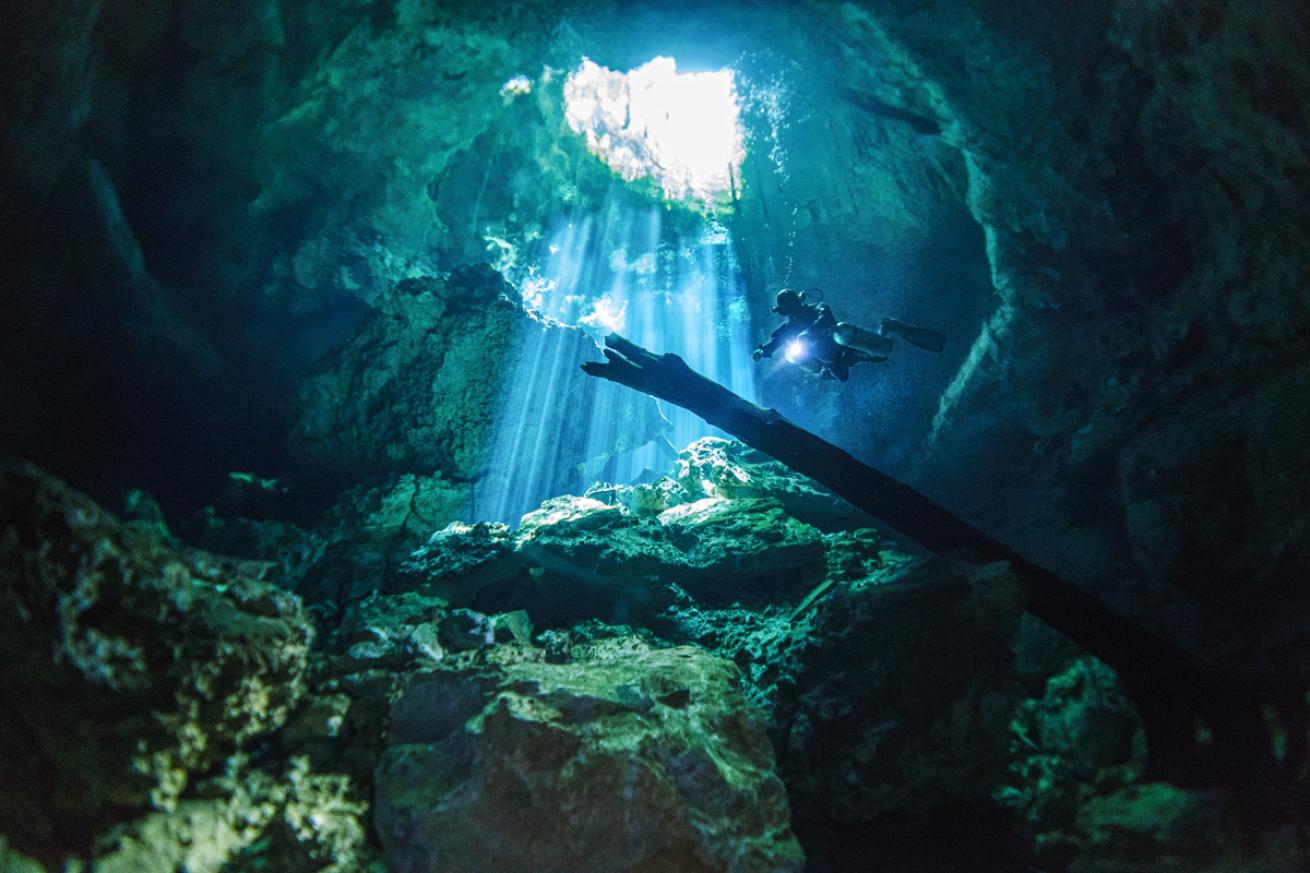
Joana VillarSunbeams filter in from the ceiling at Mexico’s Tajma Ha cenote.
What Is Readers Choice?
We’ve averaged reader survey results from 2020, 2021 and 2022 to bring you the Best of Readers Choice awards. Here we feature some of the top-rated destinations in the world, along with the winning resorts, operators and liveaboards serving those areas, listed in alphabetical order. For more: /readerschoice
Caribbean and Atlantic
- Mexico
- Bonaire
- Cayman Islands
- Bay Islands
- Belize
- Bahamas
- Curaçao
- Turks and Caicos
- U.S. Virgin Islands
- Cuba
Pacific and Indian
- Indonesia
- Fiji
- Palau
- Galapagos
- Truk Lagoon
- Philippines
- Mexico
- Maldives
- Costa Rica
- French Polynesia
U.S. And Canada
- Great Lakes
- North Carolina
- Washington
- British Columbia
- Massachusetts
- California
- Florida Keys
Caribbean and Atlantic: 1st Place Winner
1. Mexico
Mexico’s Yucatan Peninsula serves up one of the biggest menus of underwater adventures in North America. Start with the caverns and caves from Cancun to the Belize border. Open-water divers can tour the caverns for a taste of overhead environments without the commitment to extra training. Choosing cenotes over caves hardly means missing out: Sites such as Tajma Ha and Dos Ojos still deliver sunbeam light effects and centuries-old formations that wow. “Tajma Ha is a fairy tale setting with breathtakingly beautiful decorations, opening to a big cavern called Sugarbowl with spectacular light shows on sunny days,” says Susann Seifert, manager with Pro Dive International.
For divers looking to go “full cave,” schools such as Pro Dive International offer training in technical and over-head-environment diving. To earn a full-cave certification takes eight days; those with less time can commit just two days to an introduction to cave diving course.
Those not looking to go technical can go deep: The walls off the island of Cozumel bring together clear water and steep drop-offs.
This dive hub is also a choice spot for shore diving at night. “It’s a colorful underwater party,” says Seifert of all the critters, including Cozumel’s toadfish, which hide during the day only to emerge come nightfall.
Readers Picks
Resorts
Casa Del Mar, Cozumel, Mexico
Cozumel Hotel & Resort by Wyndham, Mexico
Melia, Cozumel, Mexico
Palace Resort, Cozumel, Mexico
Presidente Intercontinental, Cozumel, Mexico
Scuba Club Cozumel, Mexico
Operators
Cave Training Mexico, Riviera Maya
Dive with Martin, Cozumel, Mexico
Pro Dive International, Mexico
Scuba Du, Cozumel, Mexico
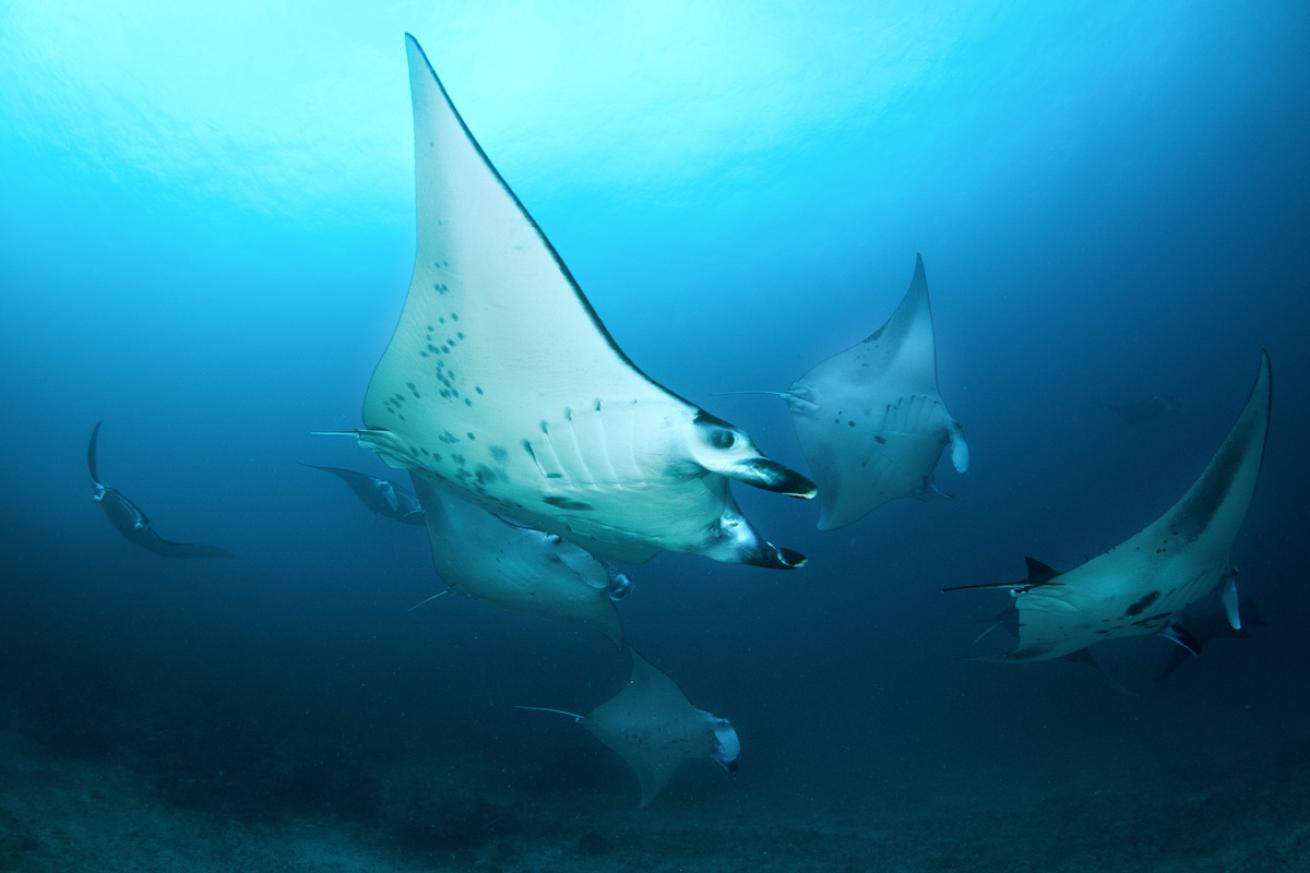
Serge UW PhotoA fever of manta rays in the current-swept waters near Komodo Island, Indonesia.
Pacific and Indian: 1st Place Winner
2. Indonesia
Indonesia is one of the planet’s most diverse dive destinations—not only for its species richness but also for its sweeping range of underwater environments, including walls, muck gardens and current-swept corners.
Komodo sees some of the greatest contrasts due to its position astride two bodies of water: the Flores and Savu seas.
The Savu Sea, by tropical dive standards, is cooler, at 75 degrees. “People say Komodo is too cold and, because of the currents, too dangerous,” says Luigi Russo, owner of The Arenui liveaboard, which treks throughout the country. But it’s precisely because of these converging seas and the influx of colder, nutrient-rich, fast-moving water that Komodo is a hotspot for pelagics such as oceanic mantas.
The conditions are best suited to more experienced divers, but even those with fewer logged dips can partake. Six divemasters cater to 16 guests aboard The Arenui, which can help increase any diver’s sense of security and safety. “We dive the right way and don’t take any big risks,” Russo says.
Readers Picks
Resorts
Wakatobi Dive Resort, South Sulawesi, Indonesia
Operators
Wakatobi Dive Resort Dive Center, Indonesia
Liveaboards
All Star Aurora, Indonesia
The Arenui, Indonesia
Dewi Nusantara, Indonesia
Pelagian Yacht, Sulawesi, Indonesia
3. Truk Lagoon
To get the most out of diving Truk Lagoon, Chuuk, Micronesia, you’ll want a liveaboard catering to advanced, technical and recreational divers on every sailing. Odyssey Adventures’ boat stocks not just nitrox, but also oxygen and double tanks for decompression diving, allowing guests to choose their level of adventure. For those with the proper training, this means longer bottom times at this massive collection of World War II wrecks—and sometimes that bonus is exactly what’s necessary to see the highlights. Take the Hoki Maru, a 455-foot Japanese cargo ship starting at 130 feet deep. “You’re at the edge of your dive limits, so you’ll only get a few minutes,” says Odyssey Adventures’ Cliff Horton of the experience that recreational divers on air find at the site.
It’s hard to heed the call of a dive computer announcing it’s time to ascend when one has just laid eyes on the trucks, bulldozer, tractor and other road-building equipment entombed within the cargo hold. “Being able to enjoy it through decompression procedures adds beyond measure,” says Horton.
Readers Picks
Liveaboards
Odyssey Adventures/Truk Odyssey, Chuuk, Micronesia
4. French Polynesia
The pass dive is the quintessential Tahiti experience, best had at the islands of Fakarava and Rangiroa.
Timing is everything with pass diving. Only the fast-moving water of an incoming or outgoing tide allows divers to ride the flow alongside sharks, dolphins and all manner of larger predators. It’s a daily occurrence, with every tidal change bringing a new mix of wild cards, including hammerheads and tiger sharks.
But for many divers, it’s the dolphins that steal the show. “I jumped in, and immediately, six came right up to us and gave us a little wave of sorts,” says Noel Morrison, of Tahiti Tourisme. “The wild dolphins there really love to engage.”
As for required skills, the pass dive is advanced in terms of speed. Everything happens faster, meaning divers have to be comfortable with drift diving and maneuvering at a quick clip. “You’re moving at the rate the current wants,” says Morrison. “You’re seeing so much—it’s an incredible ride.”
U.S. and Canada: 1st Place Winner
5. Great Lakes
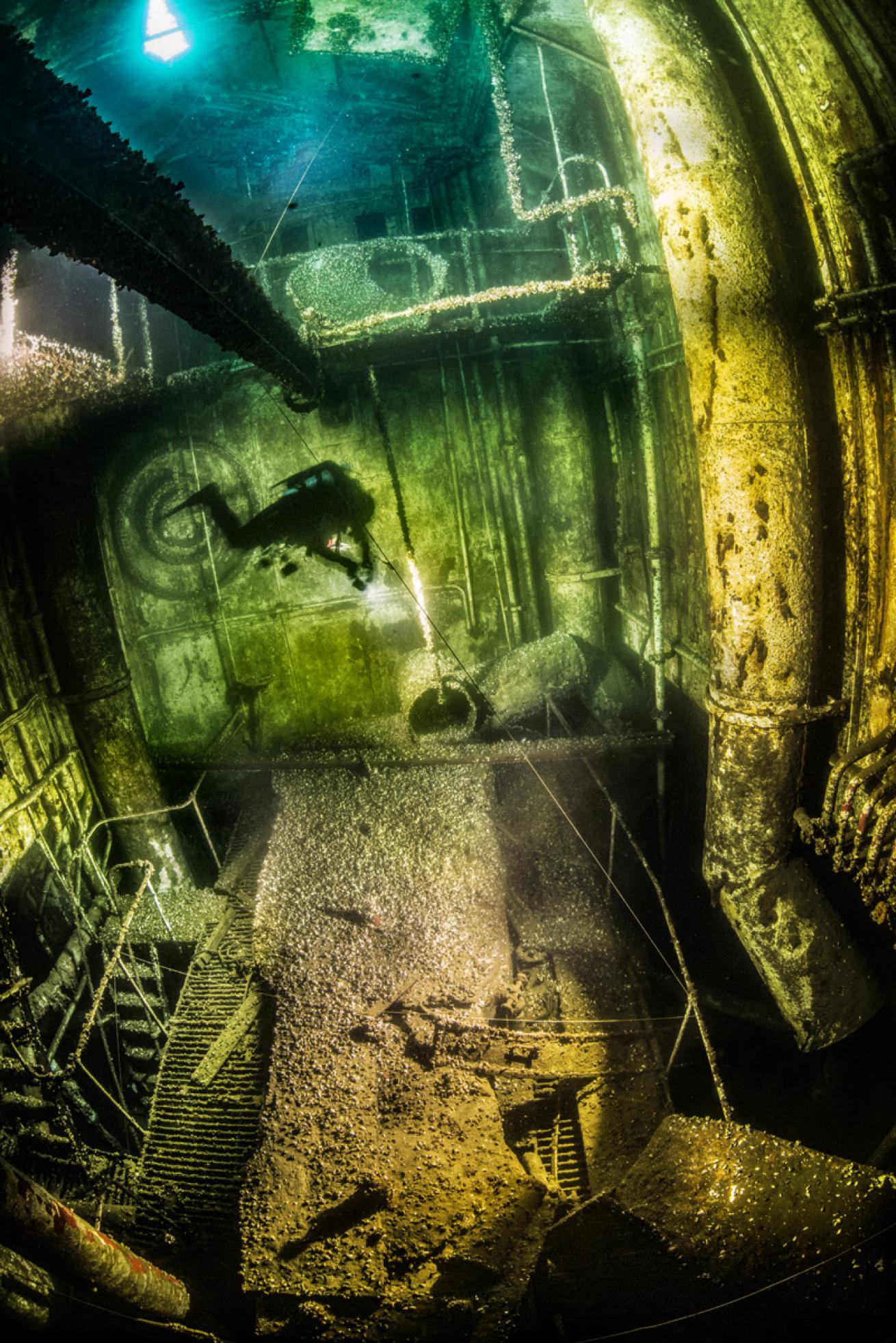
Paul MesleyThe engine room of the SS Monrovia, which wrecked and sank to a depth of 140 feet in Lake Huron during summer 1959.
Five lakes and an estimated 6,000 sunken ships make this region of the United States a wreck diver’s dream. Consider too the sometimes turbulent conditions and water temperatures dipping as low as 45 degrees in spring and fall, and it stands to reason that this environment demands more from visitors.
Starting with the fact that dive centers don’t make the plans—the weather does. Most local operators commit to a dive plan just a few days out.
For Rich Synowiec, PADI course director and owner of the Divers Incorporated scuba center in Ann Arbor, Michigan, the SS Monrovia, a liberty ship whose masts and rigging are still standing, is one of the biggest gets, especially when considering that the ship is 17 miles from shore in Lake Huron.
But anyone who’s been won’t argue as to whether the experience is worth it. “Seeing it for the first time is such an ‘Oh-my-God’ moment,” says Synowiec. “Truly, the Great Lakes will blow your mind.”
6. British Columbia
Swift currents and water cold enough to necessitate drysuits demand more from divers visiting Vancouver Island and the surrounding areas in British Columbia, Canada. It can be a lot to take on—which is why most local operators, including God’s Pocket, a private-island resort 12 miles north of Port Hardy on Vancouver Island, require divers to arrive with at least 30 drysuit dives under their belts. “Although, we’re less concerned with the number than with you being comfortable,” says Claus Eckbo, owner of the resort.
Learning to dive dry is worth it for fans of the massive wolf eels, clever and curious giant Pacific octopuses and gardens of anemones all found at Browning Pass and other sites in the region.

